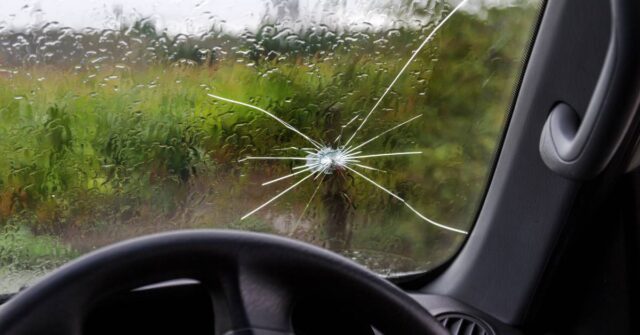Vehicle safety is a broad and complex topic that covers various aspects from the construction of the vehicle to its features and user maintenance practices.
One part that often goes unnoticed but plays a vital role in vehicle safety is the windscreen.
This article delves into the importance of your windscreen, its role in vehicle safety, windscreen maintenance, and innovative windscreen technologies relevant to the Australian market.
Introduction to Vehicle Safety
Vehicle safety refers to the methods and measures used to prevent road users from being killed or seriously injured.
These involve designing vehicles and their components to minimise the occurrence of accidents and to protect occupants when an accident occurs.
The windscreen of your vehicle, as we shall see, plays a significant role in both these aspects.
Understanding Your Windscreen
The windscreen is an integral part of your vehicle that serves the dual role of offering visibility and protection. To appreciate its role in vehicle safety, we need to understand its construction and design.
Materials and Construction of Windscreens
Modern windscreens are typically made of laminated glass, composed of two sheets of glass with a layer of polyvinyl butyral (PVB) sandwiched in between.
This construction ensures that the windscreen provides maximum visibility while offering strength and flexibility to withstand impact and harsh weather conditions.
The Science of Windscreen Design
Windscreen design involves a careful balance between aerodynamics, visibility, and safety.
It’s shaped to reduce air resistance, while the transparency provides the driver with a clear and unobstructed view of the road.
Importantly, the design also ensures that in the event of an impact, the windscreen crumbles into dull-edged pieces, reducing the risk of injury.
The Vital Role of the Windscreen in Vehicle Safety
Windscreens contribute significantly to the overall safety of a vehicle. Their role extends beyond shielding passengers from wind and debris.
Visibility and Clarity
The primary role of the windscreen is to provide the driver with a clear view of the road and surroundings.
A clean, well-maintained windscreen can significantly reduce the risk of accidents caused by poor visibility.
Structural Integrity and Occupant Protection
The windscreen contributes to the structural strength of the vehicle, particularly in incidents of rollovers.
It also acts as a barrier, preventing passengers from being ejected from the vehicle during a collision. The laminated glass design ensures that the glass doesn’t shatter into dangerous shards upon impact.
Support for Airbag Deployment
In many vehicles, the windscreen assists in the proper deployment of airbags, particularly the passenger-side airbag.
In a collision, the airbag deploys towards the windscreen and then towards the passenger, providing essential protection.
Australian Windscreen Standards and Regulations
In Australia, windscreens and their installation are regulated to ensure they provide the required levels of safety and performance.
Compliance with Australian Design Rules
Under the Australian Design Rules (ADRs), windscreens must be made of laminated glass and installed so that they do not have any distortions that can interfere with the driver’s view.
The rules also stipulate requirements for windscreen wipers and demisters to ensure clear visibility in various conditions.
Regulations for Windscreen Replacement and Repair
When it comes to windscreen repair or replacement, there are specific Australian standards and regulations that must be met.
These guidelines ensure that all repairs and replacements maintain the safety features of the original windscreen.
The Impact of Weather Conditions on Your Windscreen
Australia’s unique weather conditions can put extra demands on your vehicle’s windscreen.
Dealing with Australia’s Sun: UV Resistance
Long-term exposure to Australia’s intense sunlight can degrade the PVB layer in your windscreen, leading to delamination and reduced visibility.
UV-resistant windscreens can significantly slow this process.
Handling Heat and Cold: Thermal Resistance
The frequent changes between high heat and cold conditions can cause stress to your windscreen, leading to tiny cracks that grow over time.
Thermal-resistant windscreens are designed to withstand these extremes better.
Combatting Dust and Debris: Durability
Driving in Australia’s rural and outback areas exposes your windscreen to dust and debris. Durable, high-quality windscreens can withstand these challenges and protect the vehicle’s occupants.
Windscreen Maintenance and Safety
Proper maintenance of your windscreen is essential for your safety and for maintaining the integrity of your vehicle.
Regular Inspection and Maintenance
Regular inspection can identify small chips and cracks before they become significant issues that compromise your windscreen’s effectiveness which can impact your safety.
Regular cleaning also ensures maximum visibility.
Identifying and Repairing Cracks and Chips
Even small cracks and chips can compromise the safety of your windscreen. It’s important to repair these damages promptly to prevent them from spreading and to restore the integrity of the windscreen.
When to Consider Windscreen Replacement
Some damages are beyond repair and require a complete windscreen replacement.
Knowing when to replace your windscreen is crucial for your safety and compliance with Australian standards and regulations.
Advanced Windscreen Technologies
Recent developments in technology have led to advances in windscreen design and capabilities, increasing vehicle safety and convenience for drivers.
Heads-Up Display (HUD) Windscreens
Heads-Up Display windscreens project essential information onto the windscreen, allowing drivers to keep their eyes on the road.
This technology can significantly improve safety by reducing driver distraction.
Rain-Sensing Wipers and Hydrophobic Coatings
Rain-sensing wipers automatically adjust their speed based on the intensity of the rain, providing clear visibility in varying conditions.
Hydrophobic coatings can also enhance visibility by making the windscreen water-repellent.
Solar Control Windscreens
Solar control windscreens can reduce heat inside the vehicle by reflecting away a portion of the sun’s rays. This can enhance comfort and reduce the need for air conditioning, saving energy.
Conclusion
The windscreen is more than just a piece of glass at the front of your vehicle.
It is a crucial component of your vehicle’s safety system providing visibility, structural-integrity, and supporting the deployment of airbags.
By understanding its role and maintaining it properly, you can significantly enhance your safety on the road.
As we have seen, Australia has specific regulations and conditions that are important to consider when it comes to windscreens.
So, whether you are buying a new vehicle, considering a windscreen replacement, or simply maintaining your current one, remember the vital role that your windscreen plays in your safety.





